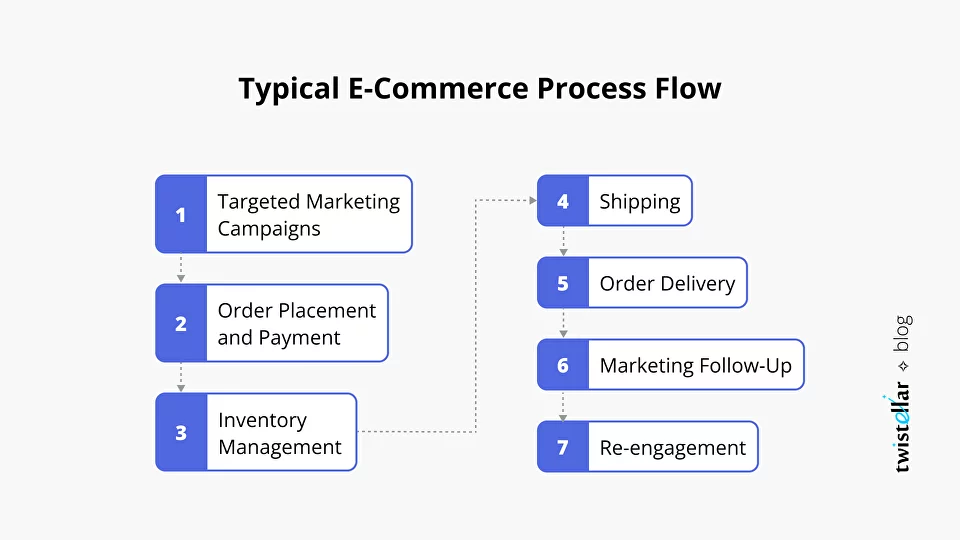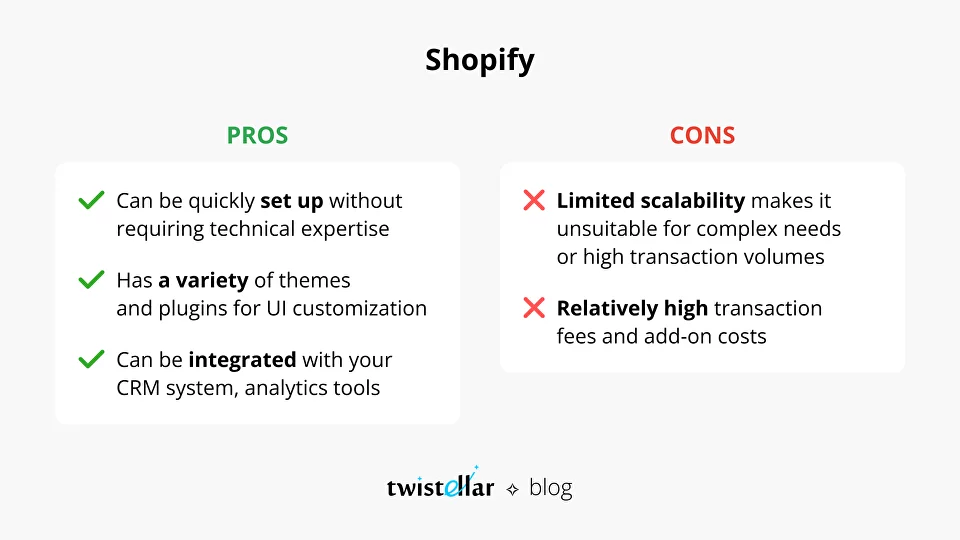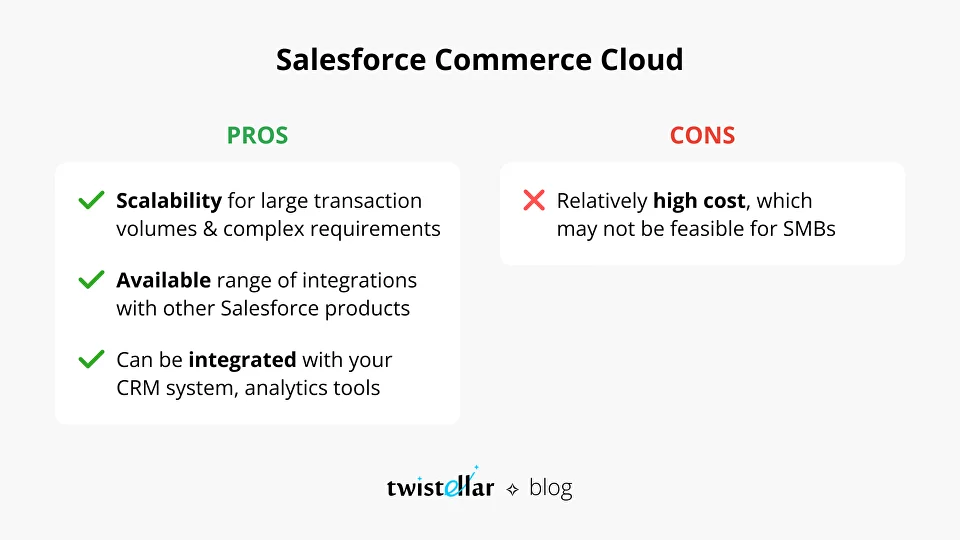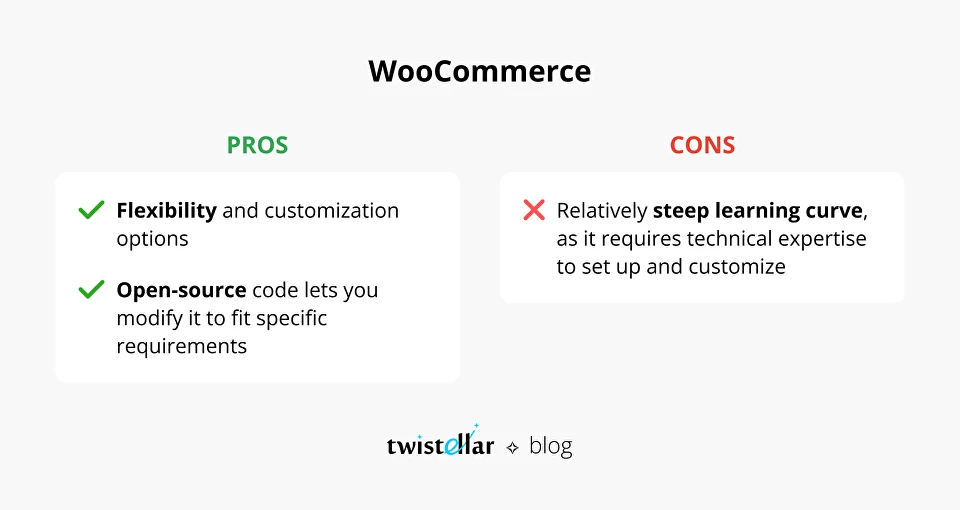
E-Commerce: 5 Automation Examples to Help You Get Started
It's hard to imagine running an online store the old-fashioned manual way. First of all, because it wouldn't allow growth. The more orders, the more workload, and the more errors you might expect. Secondly, e-commerce offers you lots of flexibility that couldn't even be thought of with real stores.
Three-Quarters of Repeat Purchases Are Made Online (Drip, 2023)
E-Commerce Automation Benefits


E-Commerce Automation Software
1. Shopify

2. Commerce Cloud Salesforce

3. WooCommerce

E-Commerce Automation Examples
1. Inventory, Order Management, and Accounting
- Having configured B2B Commerce Cloud, we have automated the calculation of price lists, the determination of the production factory, as well as the timing of order fulfillment based on dozens of parameters so that getting all the necessary data took no more than 2-3 seconds
- Customers automatically received the receipt of the cost of delivery, as well as the receipt of offers from various courier services for this delivery with different speeds and prices, so that to choose the most convenient service
- Orders were created based on the client's data that was automatically filled in earlier and provided the opportunity to change them if necessary. The data was sent to other client systems to automatically generate an invoice and send it to the client. The order was transferred to production status only after payment. At the same time, the order was automatically redirected to the manufacturer's factory to start working on it
- The system itself tracked errors with price lists, unavailability of material, or errors in data and offered the client to create a support case in one click. The client does not have to fill in a lot of data, the system itself sees where the problem is and alerts the Support team, which significantly accelerates the resolution time for cases
2. Loyalty Management
- We have automated the system for creating Customers in B2C commerce when creating a Contact of a certain type in Salesforce Sales Cloud
- The system automatically generated an authentication for the client and sent an invitation letter to join the loyalty program. After going to the site and adding the loyalty product to the basket, the client automatically received discounts and benefits as a member of the program
- Orders were sent from B2C to Sales Cloud which triggered the creation of an invoice, a contract, and all necessary records upon request. Thus, the order made on B2C Commerce was completely processed and ready for delivery in SF
3. Managing Customer Feedback
- An automated email workflow was created to send out follow-up emails after a specific time following the purchase, prompting customers to rate the service
- Customers who rated the service positively (4+ out of 5) were sent another email with a link for leaving a review on the company's website. This approach helped amplify the company's positive image and fostered trust among potential customers
- The negative feedback triggered the creation of a new Case in Salesforce, which was automatically assigned to a service representative who could deal with the issue. This streamlined process ensured prompt attention to customer concerns and contributed to improving overall customer satisfaction
4. Creating Personalized Recommendations
- Content Zones were defined and scripts were embedded on the website to let Interaction Studio catch on to important areas on the pages of the website and use Interaction Studio's AI-powered predictive intelligence to create product recommendations for each customer: e.g., if they looked for specific items, other recommendations in this category appeared at the next visit
- We used advanced scripts to manage customer's engagement data and facilitate session data layer consistency
- A push notification was automatically sent an hour after the website visit to re-engage customers
- Interaction Studio implementation allowed the company to create personalized experiences for each customer, resulting in higher levels of engagement and loyalty.
5. Introducing Incentives
- All new registrations for a seasonal promotion had to receive a welcome email with embedded verification
- Commerce Cloud was configured to enable MC to use the data during the authoring of email templates, and creation of journeys: when a user meets the needed criteria, they had to get a coupon
- As a result of the implementation, the company saw a 25% increase in sales during the incentives period. The company was also able to gain valuable insights into customer behavior and preferences, allowing them to create more targeted marketing campaigns in the future




Responses